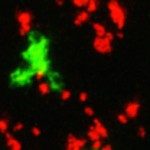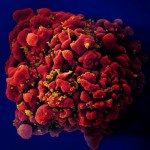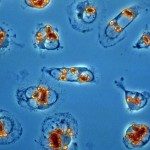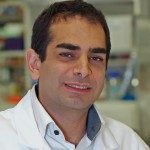Link to Pubmed [PMID] – 22727490
Immunity 2012 Jul;37(1):147-57
Effector T cells are critical for clearance of pathogens from sites of infection. Like cytotoxic CD8(+) T cells, CD4(+) helper T cells have been shown to deliver effector molecules directionally toward the immunological synapse, suggesting that infected cells need to be engaged individually to receive effector signals. In contrast, we show here that CD4(+) T cells stably contacted a minority of infected cells, yet these interactions triggered intracellular defense mechanisms in bystander cells in vivo. By using a functional read-out, we provide evidence that this effector bystander activity extends via a gradient of IFN-γ more than 80 μm beyond the site of antigen presentation, promoting pathogen clearance in the absence of immunological synapse formation. Our results thus demonstrate that CD4(+) T cells can exert their protective activity by engaging a minority of infected cells.





